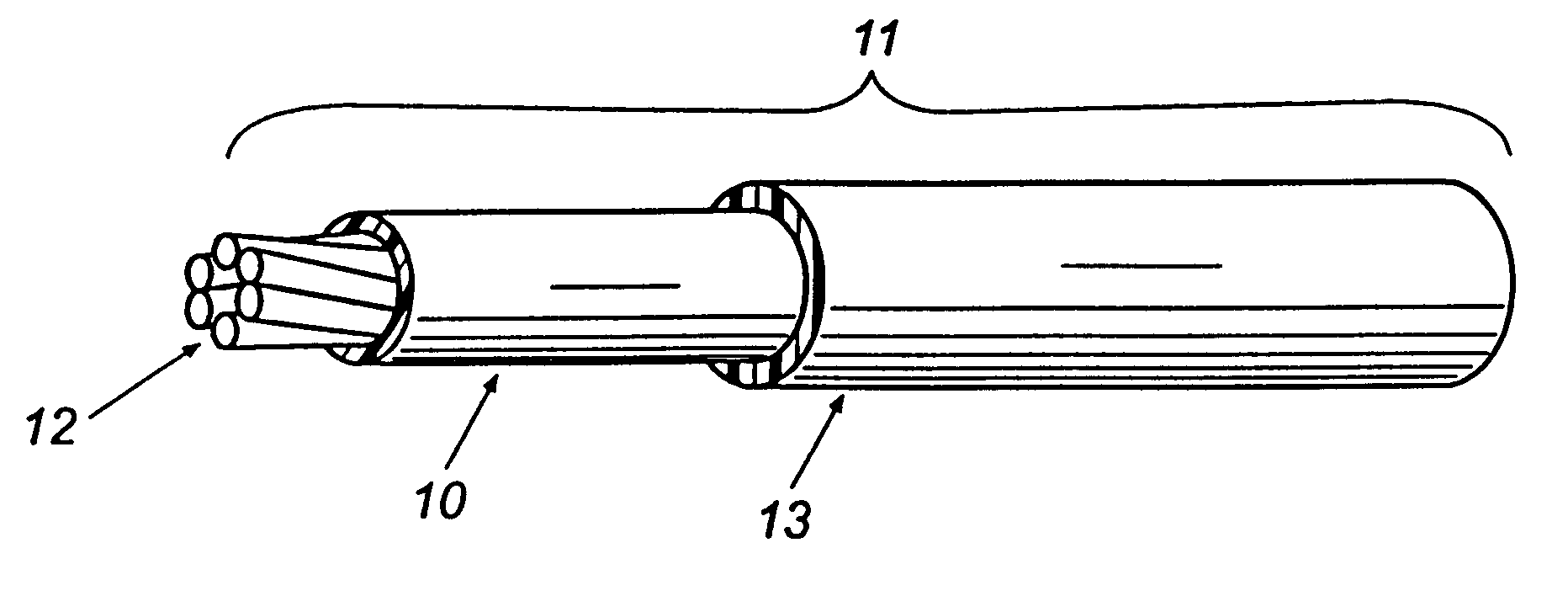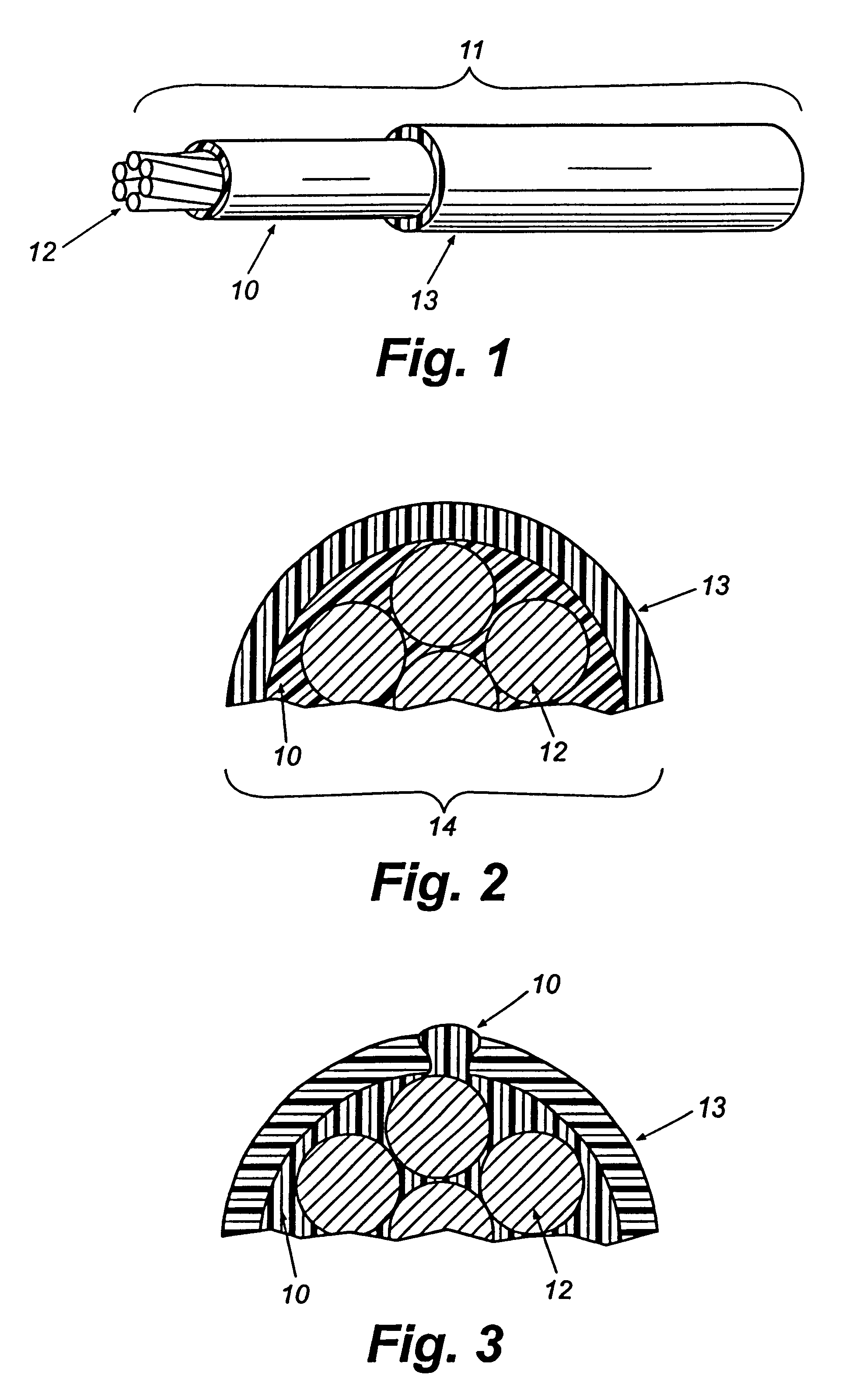Electrical cable having a self-sealing agent and method for preventing water from contacting the conductor
a technology of self-sealing agent and conductor, which is applied in the direction of insulated conductors, cables, conductors, etc., can solve the problems of voids in the sealant, failure to meet the technical and/or economic success, and inability to introduce a sealant into such spaces
- Summary
- Abstract
- Description
- Claims
- Application Information
AI Technical Summary
Problems solved by technology
Method used
Image
Examples
example 1
Defects which exposed the conductor were made in the insulation layer of two 600 V cable samples. On one of the cable samples, a layer of polyisobutene polymer had been applied to the surface of the conductor. The other cable sample did not have the polyisobutene layer. Both cable samples were placed inside separate 1 liter glass beakers containing tap water. Each cable sample was energized at 110 V to ground with AC current. The sample which did not have the polyisobutene layer exhibited severe corrosion overnight. The sample containing the polyisobutene layer exhibited no corrosion after being energized and submerged for 4 weeks in tap water in the glass beaker.
Although preferred embodiments of the present invention have been described and illustrated, it will be apparent to those skilled in the art that various modifications may be made without departing from the principles of the invention.
example 2
The conductors from seven 600 V cable samples approximately 12 inches in length were coated with the polyisobutylene. A defect was made in the middle of each sample which exposed the conductor. Three untreated cables (without polyisobutylene) were similarly damaged to expose the conductor. Each of the cable samples was then placed inside a laboratory rectangular soil box, across and through the long sides of the box, which was then filled with soil. Each sample was energized at 110 V to ground. The soil box was periodically watered to insure that the conditions leading to AC corrosion were present. Measurements of leakage current were taken to monitor the effect of the polyisobutylene layer on preventing corrosion. Periodically, the ability of each sample to carry 20 amps AC current was tested. Over a period of 2 months, all of the untreated cables showed increasing levels of current leakage, indicating progressive corrosion. The ability of the untreated samples to carry current det...
PUM
| Property | Measurement | Unit |
|---|---|---|
| Angle | aaaaa | aaaaa |
| Mass | aaaaa | aaaaa |
| Thickness | aaaaa | aaaaa |
Abstract
Description
Claims
Application Information
 Login to View More
Login to View More - R&D
- Intellectual Property
- Life Sciences
- Materials
- Tech Scout
- Unparalleled Data Quality
- Higher Quality Content
- 60% Fewer Hallucinations
Browse by: Latest US Patents, China's latest patents, Technical Efficacy Thesaurus, Application Domain, Technology Topic, Popular Technical Reports.
© 2025 PatSnap. All rights reserved.Legal|Privacy policy|Modern Slavery Act Transparency Statement|Sitemap|About US| Contact US: help@patsnap.com


